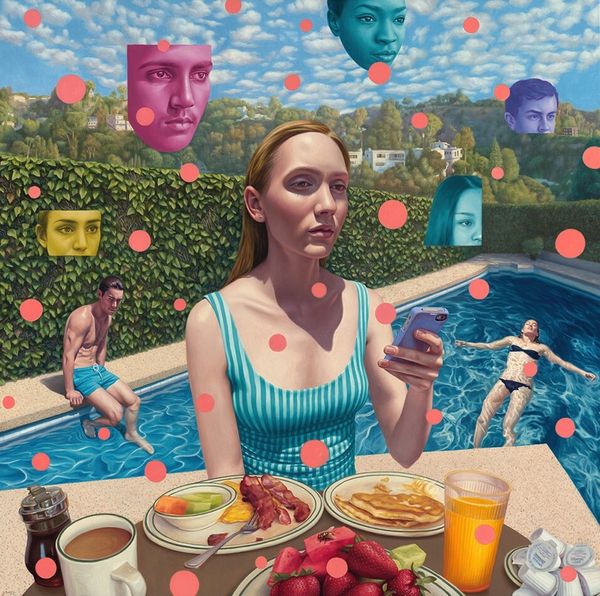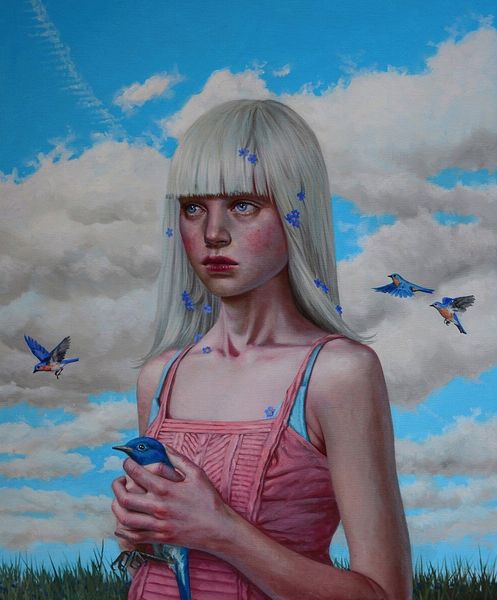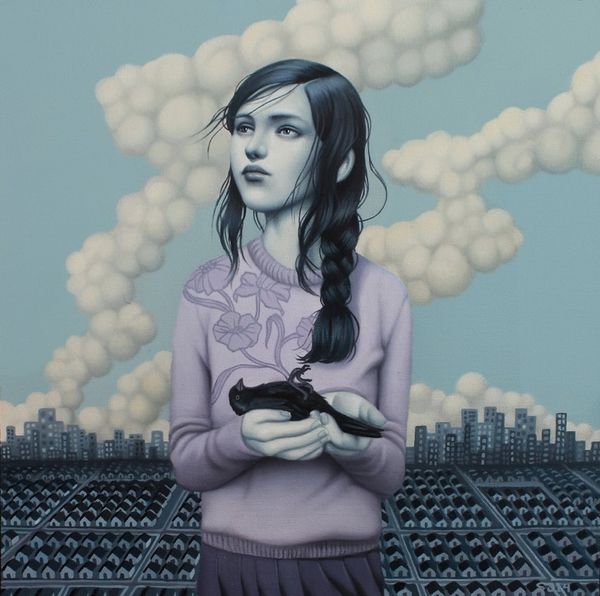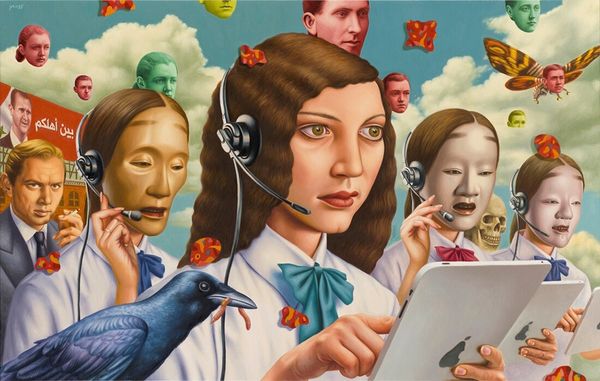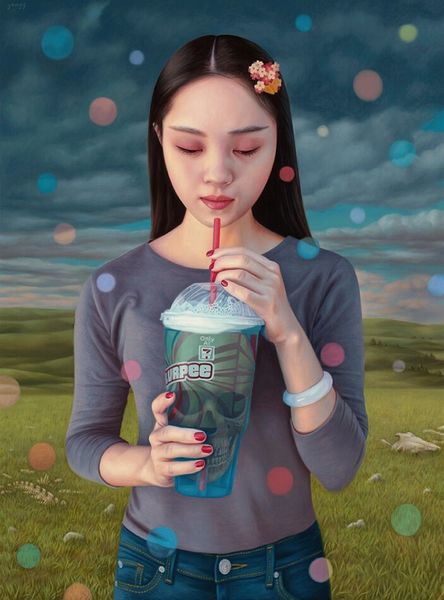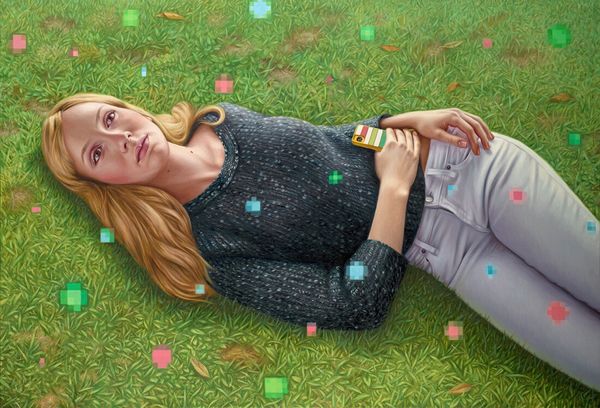
painting, oil-paint
#
portrait
#
contemporary
#
pop-surrealism
#
narrative-art
#
portrait
#
painting
#
oil-paint
#
landscape
#
figuration
#
surrealism
#
realism
Copyright: Modern Artists: Artvee
Editor: We're looking at "Dark Side" by Alex Gross. It's an oil painting of a woman on a beach, holding an ice cream cone while talking on a cell phone. What immediately strikes me is how realistically the figure is rendered versus the almost cartoonish feel of the blimps in the sky. How do you read this piece? Curator: I'm particularly interested in the way Gross layers symbols of production and consumption here. We have a hyperrealistic rendering achieved through the slow, painstaking labor of oil painting, a medium traditionally associated with elite portraiture. Juxtapose that with the "Dark Side of the Moon" t-shirt, itself mass-produced and a commodity. Then there are the blimps, literally floating advertisements, polluting the sky with branding. Editor: So you're seeing a tension between traditional artistic labor and mass production? Curator: Exactly! The materials tell the story. The oil paint itself, derived from natural resources, contrasts with the plastic and silicon of the cell phone pressed against her ear – instruments of communication reliant on global supply chains and resource extraction. Notice the off-shore oil rig in the background as well! Editor: It's hard to miss. It seems like everything, even leisure on the beach, is underscored by industry. The labor involved in acquiring something as simple as ice cream... Curator: Precisely! Even the beach, supposedly a natural landscape, is subtly infiltrated by human industry and its byproducts. What do you make of the choice of consumer brands advertised in the blimps: Goodyear and DirectTV? Editor: Goodyear blimps are pretty iconic; it is one of those long-established US-made brand and makes you think of transport. DirectTV makes me think of the entertainment industry and modern technology, almost global in reach, especially given it's carried by satellite. Curator: A fantastic way to summarise! Gross has managed to create a rather cynical statement about labor, mass production and also advertising. The painting forces us to confront the systems of labor and commerce that shape even our moments of leisure. Editor: It definitely gives me a lot to think about in terms of how much consumption affects art and its subject. Thanks for pointing out things about materialism!
Comments
No comments
Be the first to comment and join the conversation on the ultimate creative platform.


